It can be found where construction has to be cheap and simple.
Corrugated sheet metal.
Inspired by the Slums we developed a fascination for the material and its shape.


Through this project we wanted to have a deeper look on plastics and its possibilities.
When we started the project we thought of a solutions to solve the problem of pollution.
Well, thats not gonna happen in just 6 month.
Using a classical up-cycling approach we wanted to create things from existing plastic shapes by reassembling them. Soon I realized that possibilities for creativity are narrow and almost exploited to an end.
In order to give the children more challenging tasks and input, Anna Drewes and I decided to join forces. From than on we concentrated on the process of melting the plastic so that we could achieve greater freedom for design.
During the Experimental Phase Team Eagles and Alpha worked together. At the end of the process stands TANURI.
A oven that can melt and press Bottle Caps in order to create new material.
As we saw the necessity for improvment in roof constructions in the Love School, our plan was to use the material create tiles for roofing that last longer than the metal and can also be used as a quick fix for existing metal constructions.

SINUS is not just a table!
It is a set of pieces that can be used playfully to organize and structure a space.
The complementary parts give possibilities and restrictions in order to explore new ways of usage. Looking at tables from a different perspective, breaking the rules to make space for new ideas.
We love things that fit together. Ever since we put, set, turn, combine, place and sort the things that surround us. SINUS is dedicated to that pleasure.
Two tables, one made of wood and the other made from metal have sinus shaped table tops. They are displayed with complementary forms that fit into each other. Here wood meets metal meets porcelain meets foam meets plastic.
The player of the puzzle is invited to assemble the pieces to his needs and taste.
www.annadrewes.com/sinus
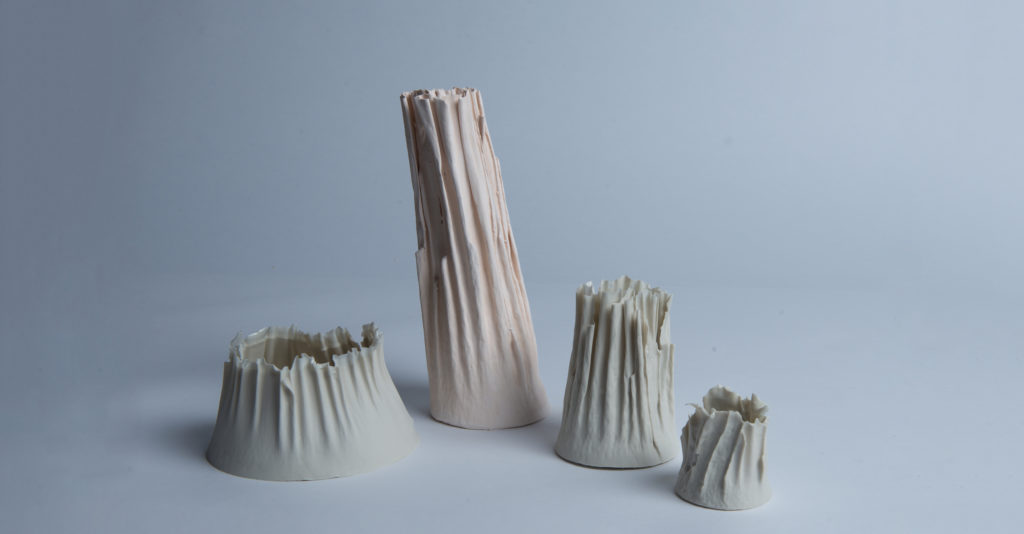

This is an experiment where I included electrical cables and wires into the rope making process. Through this process the rope is bendable and able to transport electricity – safely. In the pictures you can see a version with a bulb at the end. The rope changes over in to the cover of the bulb holder. I added also a plug and switch. The user is able to form it in any form.

In order to integrate the found out parameters i started cutting bottles to generate more shapes in which water and a level holding candle could be integrated in a simple way that could be reproduced by Stacy and Kevin as well.
It turned out the simple way could not be found. More and more problems showed up that i could only find complicated solutions for.



The bowls that Children made from clay and attached some woven parts to them inspired my further experiments. I have transferred this principle to some objects combined of porcelain and woven part.
Porcelain and plastic rope
Porcelain and plastic rope winded round with a wool thread
Porcelain and plastic rope winded round with a strip made from plastic bag







The work with the kids in Nairobi started very good. there was an equal interest and excitement to work together. One reason for that was the wish to get an idea what the world of the team partner be like. Internet calls and social media messengers were the tools to talk about the common grounds but also about differences. In the process drinking tea became an interesting common ground. Drinking Tea as a Ritual is common all over the World.
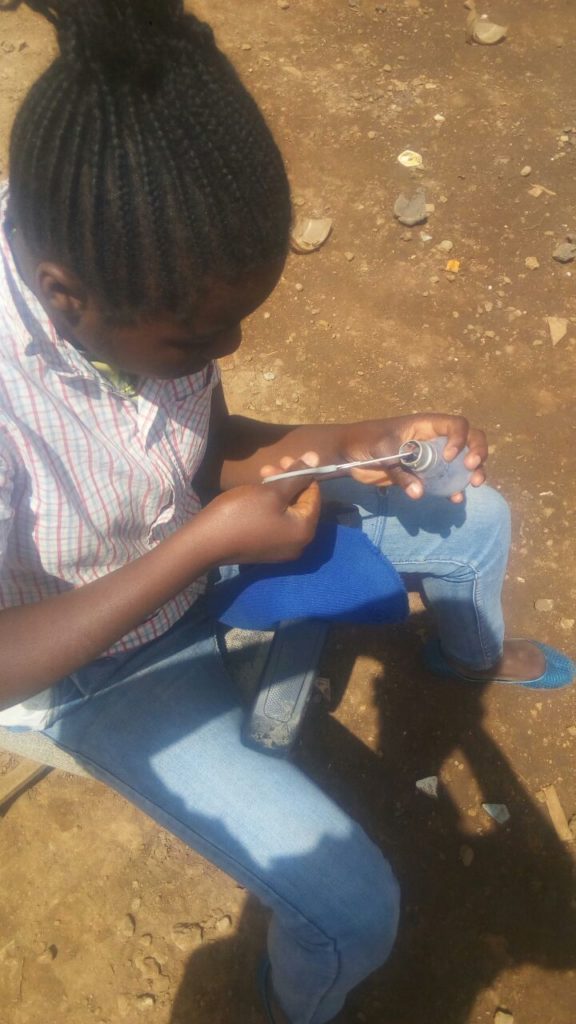
Light Bulb Reuse
We found out that round shaped glas filled with water focuses the light.
In order to get perfect and cheap glas hemispheres we reused old light bulbs.
Light Bulb Experiments
Bulb Experiments Stacy and Kevin, Kangemi
Bulb Experiments Martin, Berlin
Experimenting with the water filled light bulbs we found out that
determine the size and point of appearance of the light focus.
Early Mockup of a candle driven lamp
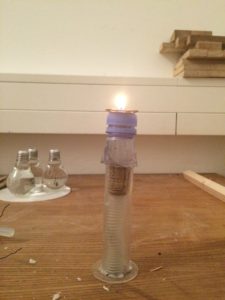 Mockup of a level holding candle in order to keep the angle to the bulb fixed once adjusted
Mockup of a level holding candle in order to keep the angle to the bulb fixed once adjusted

Starting Point
Many people in Kangemi use candles and
cerosene lamps as a substitude for electric light.
Candles have a warm light color that is pleasant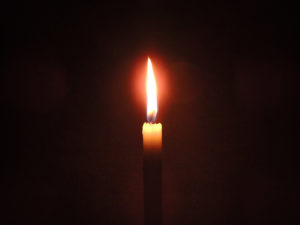
for the eyes but the light is diffuse which makes it hard
to work or read at it.
My original attempt was to experiment together with Stacy and Kevin on ways of improving the light of candles in order to be able to build a lamp, driven by a candle, that could given an improved light when for example reading in the evening.
First Investigations
We started off with first experiments on the change of light in combination with different transparent and reflective materials and water.
For that the kids were supposed to collect materials as glas containers, bottles, can, metal foil and others that they could find around the area of Love School.
Light Experiments Martin, Berlin
Light Experiments Stacy and Kevin, Kangemi



In the beginning of the Loveschool Project, I tried all kinds of different plastic bags to produce ropes. With time the ropes reached a better quality, I was able to expand their length and enhance the production speed, dramatically through the use of electrical engines.
1 cm Stripes, 12m long
Medi Max, 2cm Stripes
Weekday, 2cm Stripes
2 Vegetable Bags, 2cm Stripes
Plastic Bag Modulor, Plastic Bag Kölner Kochhaus, 2cm stripes
Copper wire, 0,4mm
Saturn Bag, 1cm stripes
6m long


















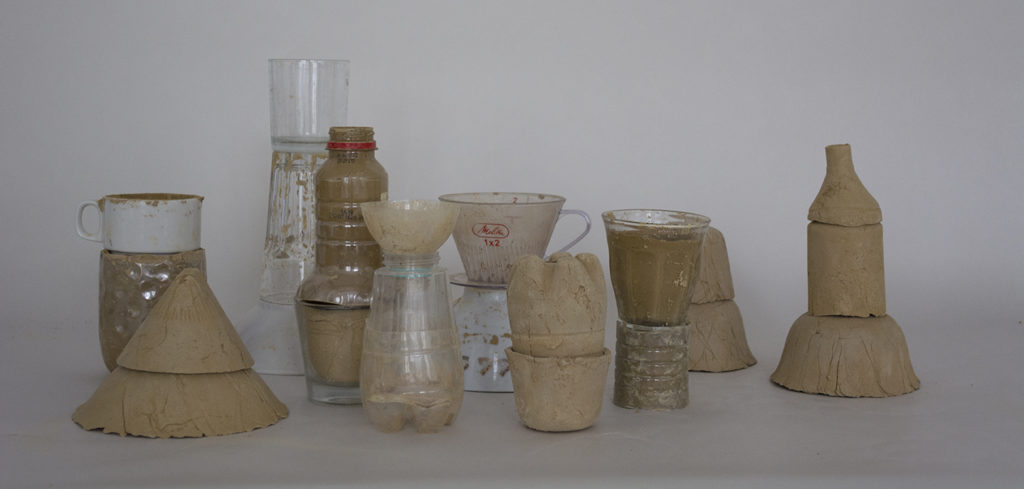
The work with combining different inner and outer forms led to the idea to combine different forms by stacking them. With this technique you are able to create new forms by using all of the already existing forms. It is a fast way to create sculpture like forms in a playful and experimental process.
It also leads to questions about how we want to design. Is the amount of existing forms not enough? Is it still possible to create new forms or is it only a repetition of the existing forms? How can the existing forms be used in different context? Also what beauty is contained in everday forms that you rarely notice?




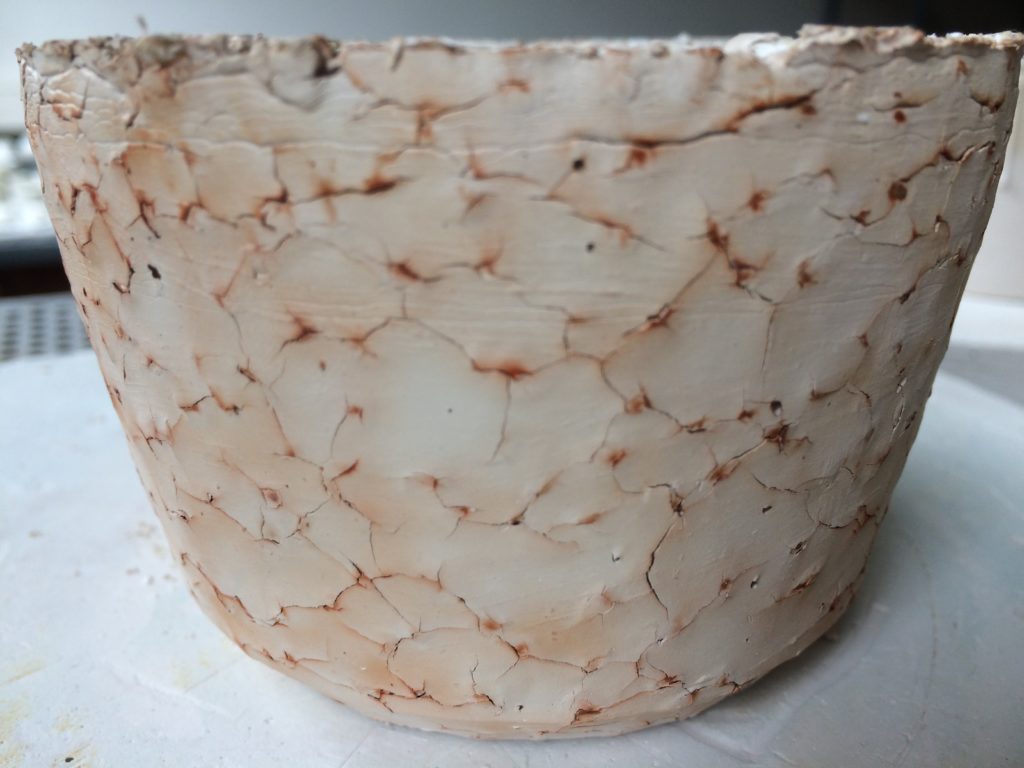
Baked with Bookweed, Volcano Sand..
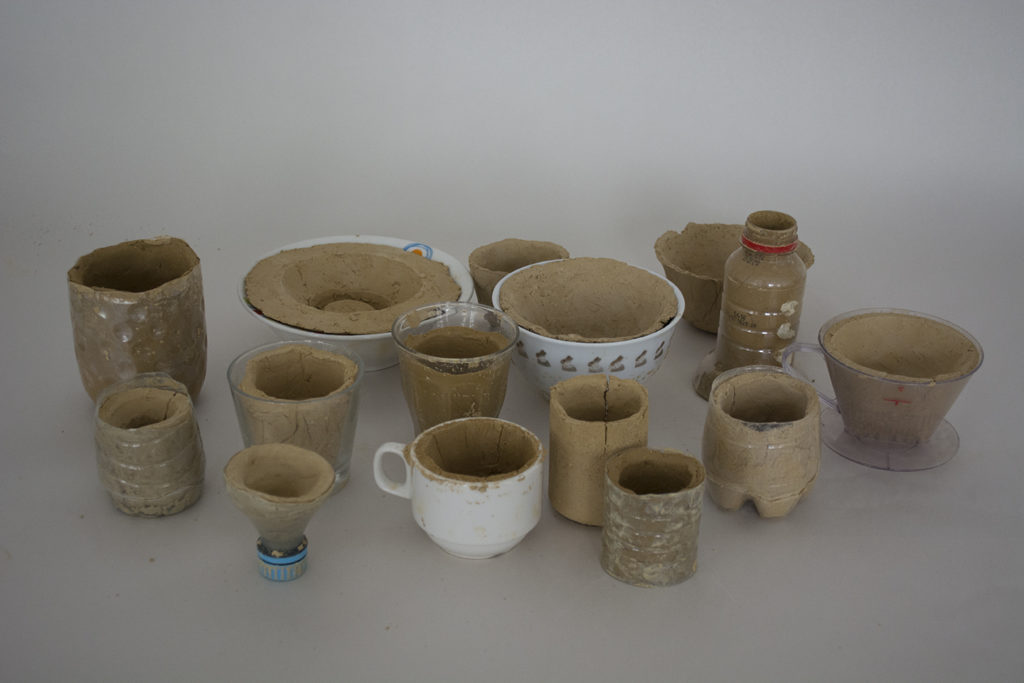



The first task for the kids was to make three different cups. The only parameters to follow were the measurement of the cups ( height of the hand, the diameter on top length of the finger, easy to hold with one hand). The purpose in my cups were to show the kids that you can still create different aesthetics with set parameters.








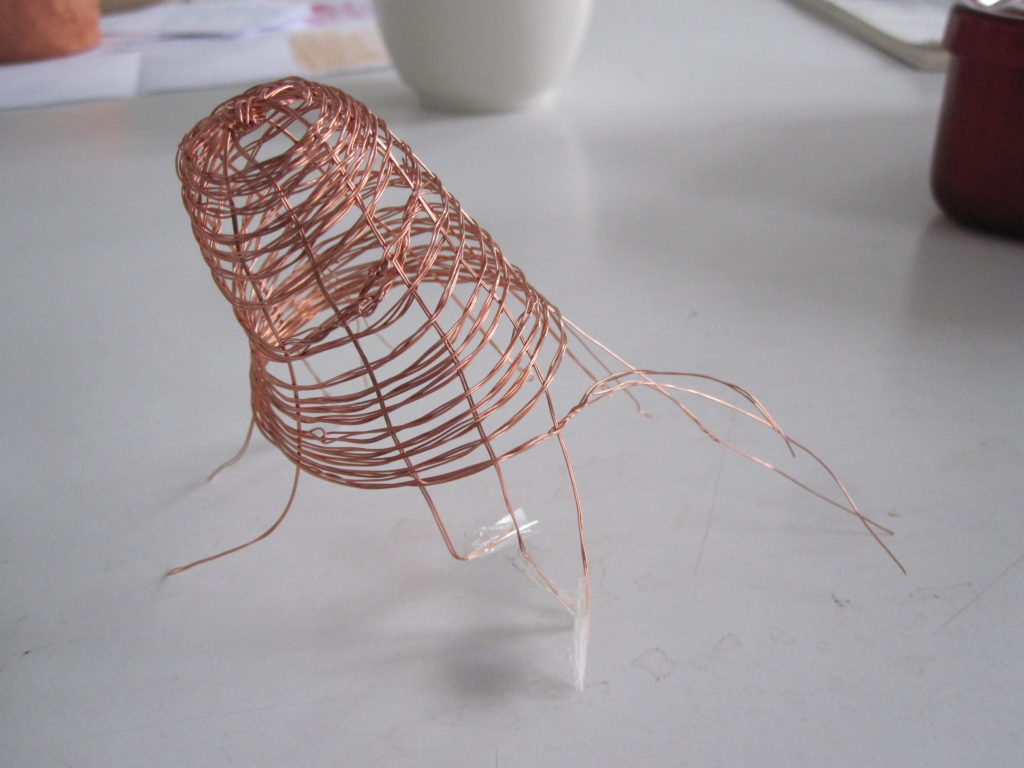
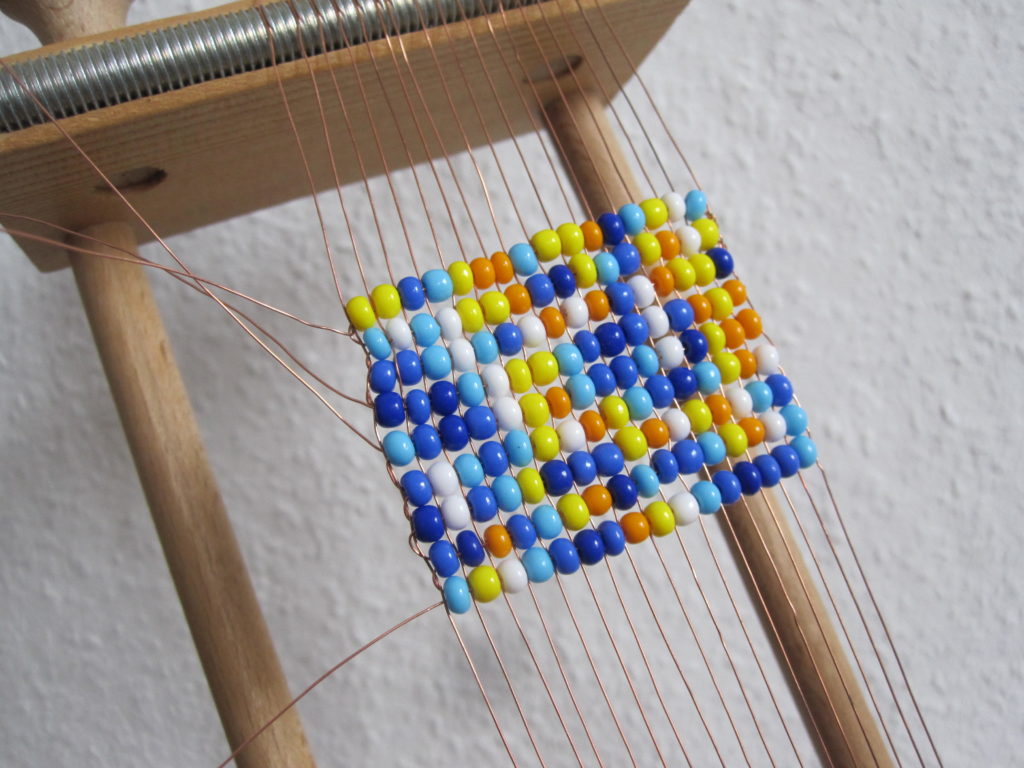


Instruction for weaving on a cardboard loom:
http://www.instructables.com/id/how-to-weave-on-a-cardboard-loom/?ALLSTEPS


